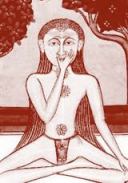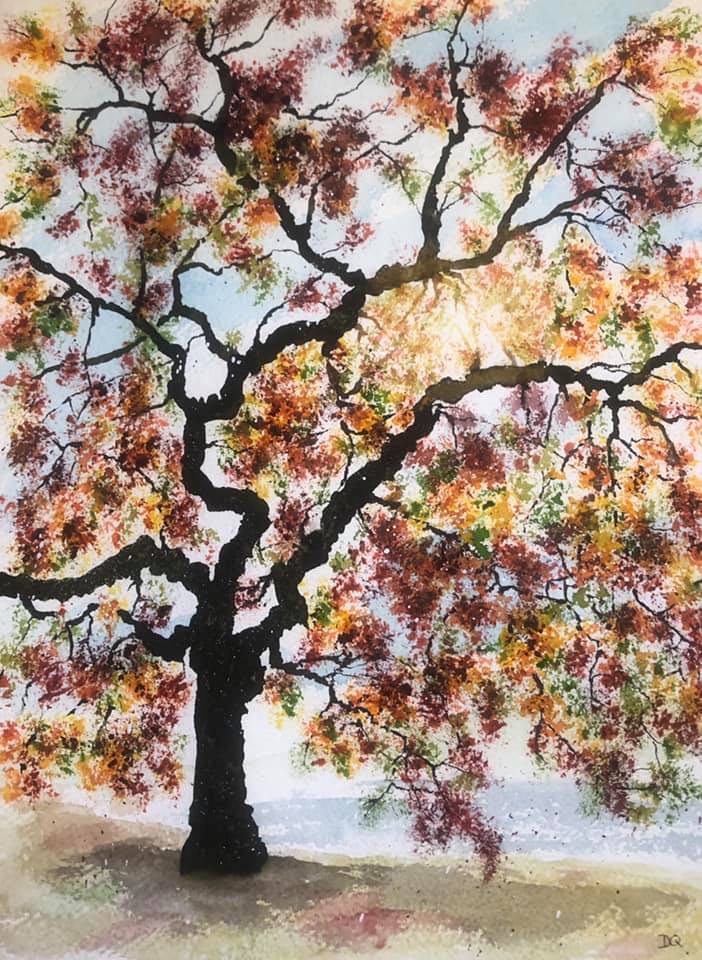 I created this story and told it for the first time at Yoga West last Sunday. Some of my students encouraged me to publish it, so here it is!
I created this story and told it for the first time at Yoga West last Sunday. Some of my students encouraged me to publish it, so here it is!
I was inspired by the two sycamores we share a home with, “Don Quijote” and “Sancho Panza.” The picture with this post is actually one of them. I suppose you could say that we are the family in this make-believe story. Only, the message isn’t make-believe. You’ll probably see very quickly, that we all do what the sycamore tree does.
~ ~ ~ ~ ~ ~ ~ ~ ~ ~ ~
This is a story about a sycamore tree who wished he could be more like the cactus. He stood very tall, next to another sycamore tree. Together, they guarded a charming old bungalow house and were much loved by the family who lived there.
He got the idea to imitate the cactus because all the billboard ads say that cactus spikes are in fashion. With all the attention the cactus was garnering, the sycamore began to feel that he wasn’t as handsome or as special as the cactus.
So, the sycamore went online and payed top dollar for the rarest cactus spikes from Mexico. From his elevated position, he was able to watch the street everyday, for his coveted Fed Ex delivery.
Finally, they arrived! And on that day, he pulled off all his fan-shaped leaves and replaced them with the pointy spikes in the box.
While he was online, he had seen more ads for similar imported goods from Mexico. One item, in particular, caught his attention: Genuine El Norteño cowboy boots! The ad said that these boots would make him more masculine. He couldn’t stop thinking about them, so once again, he snuck into the house, went online and ordered them.
And once again, he watched and waited for the unmistakable white truck to come down the street. Finally, when his beautiful boots arrived, he rushed to put them on. But this proved to be a formidable task, as his roots were very long and stringy and he was having a hard time scrunching them into the pointy, leather, boot toe.
At first, he felt proud and pleased with his new look. But after a few days, he wasn’t feeling so well. The Dr. said that without his leaves in tact, he wasn’t getting enough sunlight to facilitate photosynthesis. Tests also showed a deficiency in CO2.
As if this news wasn’t bad enough, he learned that the family members in the old wooden house, weren’t feeling well, either. They were short on oxygen and no longer had any shade to keep them cool on hot summer days.
That did it. The sycamore put his leaves back, at once, and replanted his roots in the earth, which immediately and thirstily began drinking up water, like happy kids sucking up apple juice with straws.
As he fortified his body with sunshine and water, balance was quickly restored and everyone felt better right away. The family once again began to enjoy picnics under the lush, green canopy formed by his fan-shaped leaves, and the giant expanse of shade that this created, kept the air fresh all year round. They even built a beautiful treehouse in his strong, shapely branches!
The sycamore came to realize that there is no other tree quite like him, that each one is beautiful in its own way, and that each fulfills a unique purpose in nature. He now felt very proud to be himself, to serve in a way that only he can, and to be such a tremendous source of delight in the world.
~DDQ
~ ~ ~ ~ ~ ~ ~ ~ ~ ~ ~
Moral of the Story…
We give away our authenticity through our fixation on identity and our need for outside approval. We also succumb to what my teacher calls “OPO,” better known as, “Other People’s Opinions.” There is perhaps only one thing that’s worse—we cripple ourselves with our own stories, such as when we buy into it all, and begin to tell ourselves that we’re not good enough as we are.














